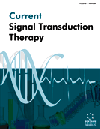
Full text loading...
We use cookies to track usage and preferences.I Understand
Current investigations have proposed that focusing on malignancy cell metabolism is an elective restorative methodology in cancer treatment. AMPK is the significant energy sensor regulating ordinary as well as malignancy cell metabolism. Drugs as AMPK activators can quell malignancy cell development through the various signalling cascade. AMPK enactment in light of natural AMPK activators, for example, BME, ICT, Thymoquinone, has been displayed to constrict mTOR, approving that BME can restrain cell development in ovarian malignant growth cells utilizing suppressing mTOR-mediated protein translation process. Nutraceuticals as well as traditional medicines operate as natural AMPK activators that regulate AMPK movement through a mechanism that is independent of AMP. These naturally occuring AMPK activators might straightforwardly actuate AMPK through single or more than one mechanism in AMPK initiation. Exploring the synergistic effects of compounds with existing cancer treatments could open new avenues for combinatorial therapy, potentially enhancing efficacy and reducing side effects. Moreover, understanding the precise molecular pathways through which these natural AMPK activators exert their effects will be crucial in designing targeted therapies that maximize their therapeutic potential. The integration of these nutraceuticals into standard cancer treatment protocols requires rigorous clinical trials to establish their safety, optimal dosing, and long-term benefits in cancer patients. With further investigation, the possibility of using natural AMPK activators in addition to traditional medicines could transform cancer treatment by providing more patient-friendly and comprehensive options.

Article metrics loading...

Full text loading...
References


Data & Media loading...

